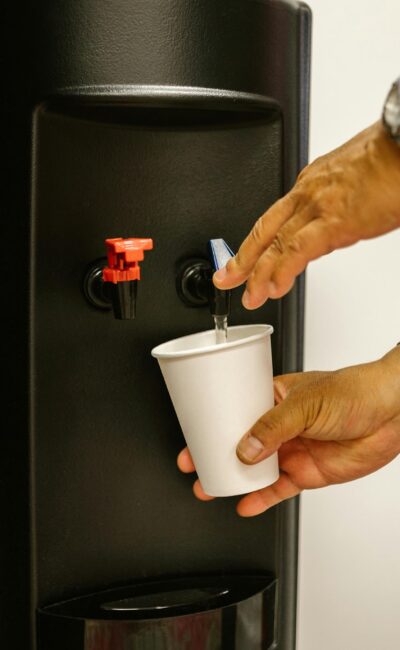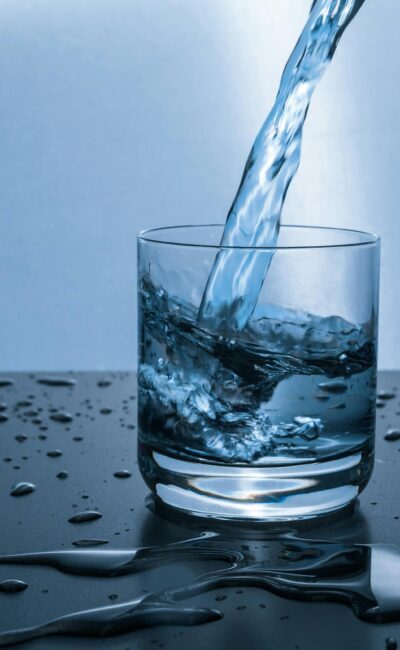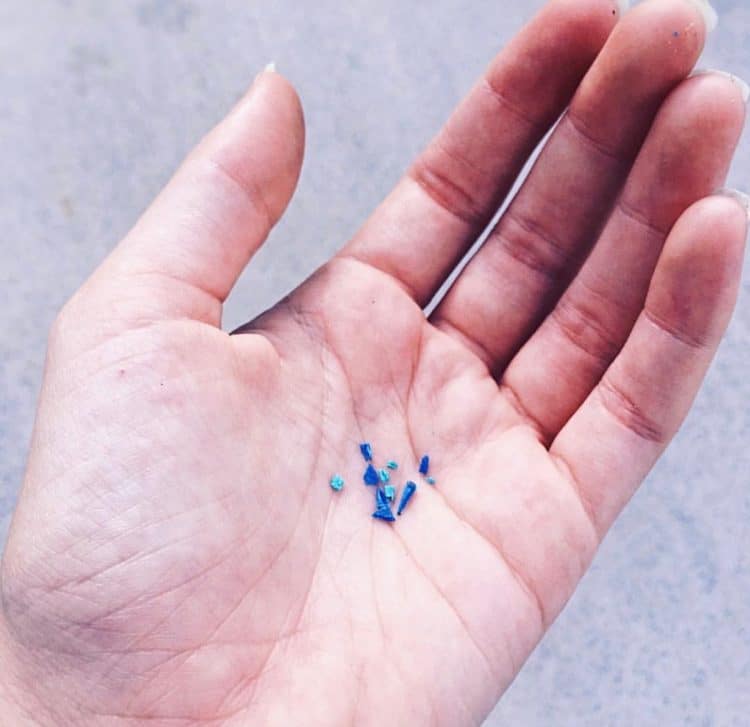Updated July 2024
The health effects of lead in drinking water have been a concern for millions of Americans for decades. Lead is a toxic metal that accumulates in the body over time. The Safe Drinking Water Act has set the maximum contaminant level for lead at zero due to its toxicity and potential harm to human health.
Lead is found in the air, soil, and foods we eat. However, the U.S. Environmental Protection Agency estimates contaminated drinking water can make up 20 percent or more of a person’s total lead exposure. Pregnant women, infants, and people with weak immune systems are more susceptible to lead contamination.
Serious side effects include premature birth and reduced fetal growth in pregnant women. For this reason, we cover everything you need to know about drinking tap water while pregnant. Children who have been exposed to lead may suffer lower IQ, hearing problems, slowed growth, and behavioral and learning problems. Furthermore, infants can receive 40 to 60 percent of their exposure to lead through drinking water consumed in mixed formula.
Although symptoms are less likely to appear in older children and adults, lead exposure is cumulative. Even trace amounts build up over time in the body and can have negative long-term effects. Consuming it in drinking water over several years can eventually lead to serious health problems. These include decreased kidney function, reproductive problems, and cardiovascular events, such as increased blood pressure or hypertension.
To combat the health effects of lead in drinking water, it’s good to know how to identify signs and sources of lead in water and learn why investing in a water faucet filter is the best way to remove it.
Signs of Lead in Water
Lead in water can’t be detected by sight, smell, or odor, which means lead poisoning can be hard to detect. Symptoms don’t typically appear until dangerous amounts have accumulated in the body. Infants and younger children absorb this toxin more easily, making them more susceptible and immediately reactive to the health effects of lead in drinking water. These include:
- Abdominal pain
- Diarrhea
- Vomiting
- Weight loss
- Fatigue
- Hearing loss
In some instances, extreme exposure can result in seizures. If you’ve been exposed to lead in water, contact your healthcare provider, even if there are no lead poisoning symptoms. The health effects of lead in drinking water are harmful and can stay hidden in the body for years. A blood test can confirm whether you or your child has been exposed to dangerously high lead levels and what follow-up actions are required to minimize the adverse effects.
Sources of Lead in Drinking Water
The most common sources of lead in drinking water come from lead pipes, faucets, and plumbing fixtures. Lead enters water whenever a chemical reaction occurs, primarily corrosion. This can be the result of a high level of acidity in water, the amount of minerals found in water, and how long water stays in the pipes. Additionally, the amount of corrosive water in the pipes and the presence of protective coatings can leach lead into tap water, making it unsafe to drink.
Cities that haven’t updated or replaced their water systems risk affecting the public. There have been several major cities in recent years that have battled problems with urban water pollution and obtaining safe drinking water. Flint, MI, Newark, NJ, and Pittsburgh, PA, are among the most recent and prolific examples of negative health effects of lead in drinking water.
Homes with water pipes and household plumbing fixtures built before 1986 also run the risk of contaminating drinking water with high lead levels. Additionally, communities close to industrial or agricultural sites may have higher lead concentration in their tap water. The use of chemicals and improper waste disposal infiltrate the groundwater and increase the level of contaminants. Each city is responsible for maintaining its own water and sanitization protocol. This means water quality can vary depending on where you live and your city’s water system.
People most at risk are those who live in older homes with lead-based paint and/or household plumbing. Also, working in occupations with higher lead exposure, such as batter manufacturing, painting, and auto repair, can increase your risk. Certain toys, cosmetics, and other household items may contain lead as well. The accumulation from these various sources plus lead exposure in drinking water can equal dangerous health effects.
Reducing Lead in Drinking Water
Since it’s found in numerous sources, it’s impossible to fully eliminate contact with lead. However, there are several ways to reduce the lead level in water, which is responsible for a high percentage of exposure. The first thing is to learn what’s in your water and have a water sample tested if necessary.
Every city’s water department provides a Consumer Confidence Report on an annual basis that lists the types and amount of contaminants found in your tap water. Another option is to contact your water utility department and request a water test for lead specifically. There are also at-home ways you can help reduce the amount of lead in drinking water.
- Flush your water pipes to reduce potential lead exposure in your home. This is especially important if the water has been off and sitting in the pipes for more than six hours.
- Before consuming water from the tap, take a shower, do a load of laundry, or run the dishwasher.
- Regularly clean the faucet screen, which can accumulate a buildup of debris and sediment, including lead particles.
- Check your building records. Older homes that have lead-based paint or lead-based plumbing materials greatly increases your exposure to lead.
Another best practice is washing hands and toys often. This reduces hand-to-mouth transfer of lead exposure in small children. Also, follow a balanced diet. Calcium, vitamin C, and iron help keep lead from being absorbed in children. Ensure they’re eating enough fruits and vegetables to meet the amount of vitamins and nutrients they need to stay protected.
These are a few of the proactive ways to limit the amount of lead you consume. However, when it comes to reducing the amount of lead in your drinking water, it’s best to use a water faucet filter. The best faucet filter variations transform tap water, making it healthier and more appealing to drink.
How Faucet Filtration Works
Water faucet filters are designed to capture dirt, sediment, and certain contaminants and remove them from your tap water. The FloWater Faucet Filter removes or reduces up to 80+ known contaminants frequently found in tap water, including lead. This improves the taste, appearance, and health of the water you drink every day. It can easily be installed on your home faucet to provide fresh water on-demand directly from your original water supply.
Its technology filters tap water through several stages of filtration, each uniquely designed to remove pollutants, viruses, and bacteria often found in tap water. It starts with a sediment filter that catches dirt, rust, dust, and other solids that exist in tap water or pipes. From there, a carbon filter removes the smaller particles that can cause unpleasant odors and tastes. These include chlorine, hydrogen sulfide, and heavy metals.
The next filtration involves advanced osmosis, which uses a semipermeable membrane that captures and removes the smallest particles and contaminants, including bacteria, viruses, pesticides, and herbicides that pollute drinking water. Meanwhile, FloWater’s alkaline filter neutralizes acidity in the water and raises the pH level of water coming from the tap.
Many water sources are high in acidity, which results in pipe corrosion. This acidity also adds stress to the organs as they work hard to rid the body of its effects. With an added blend of ten trace minerals, the alkaline enhancement helps to neutralize the acidity in your body. This is often caused by daily factors including environmental pollution, an unbalanced diet, and increased stress. This multi-stage filtration process transforms tap water into a safer, healthier hydration experience.
Benefits of an At-Home Water Faucet Filter
A water faucet filter is easy to use and install. Plus, little to no maintenance is involved since filters last for approximately three months. It’s also a more sustainable water source to bottled water. Bottled water has been the go-to filtered water source for the past several years due to its convenience. However, the cost quickly adds up. The FloWater Faucet Filter saves an average family of four approximately $700 per year when compared to the cost of drinking bottled water at home. If you’re focused on personal money management, this is a great place to start.
Additionally, plastic waste is harmful to the environment. Most single-use plastic water bottles aren’t recycled. They end up in landfills where they take hundreds of years to naturally decompose and eventually spill into the ocean. This cycle disrupts the ecosystem and causes a ripple effect of problems. Installing a water faucet filter reduces your carbon footprint and is less costly than constantly repurchasing cases of bottled water. In fact, we cover how to prevent pollution in great detail.
Moreover, it’s been reported that most bottled water is actually sourced from city tap water. It doesn’t go through the extensive filtration process that the FloWater Faucet Filter provides. FloWater provides a cleaner, better-tasting option that’s conveniently available at home.
Exposure to lead in drinking water is not a new problem, but there are sustainable solutions available. Using a water faucet filter removes this toxic metal, along with several other contaminants found in water systems. It helps keep your family healthy and hydrated, while benefiting the environment at the same time.
Sources:
https://www.cdc.gov/nceh/lead/prevention/sources/water.htm
https://www.epa.gov/ground-water-and-drinking-water/basic-information-about-lead-drinking-water
https://www.mayoclinic.org/diseases-conditions/lead-poisoning/symptoms-causes/syc-20354717




